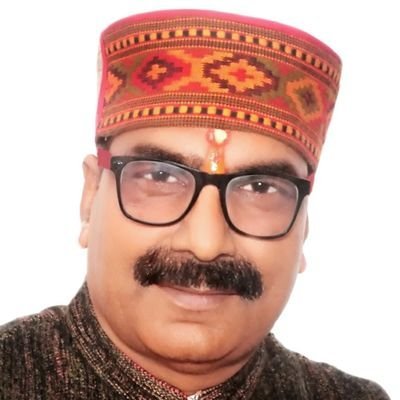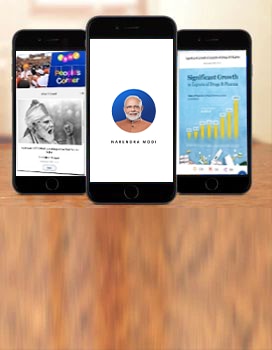The upcoming 2024 General Elections, set to take place across seven phases from April to June 2024, are expected to witness widespread participation from nearly 97 crore registered voters among a populace of 140 crore. These elections will be the world’s biggest electoral exercise given the sheer size of the India’s population, wherein the electorates exceed all of the European Union population put together. Around 55 lakh EVMs will be put in use across 10.5 lakh polling stations, manned by around 1.5 crore polling officials and security staff.
India leveraging technology to streamline the voting process is a natural choice as technology adoption in voting processes has simplified the voting process, improved efficiency and accuracy compared to manual methods. India in the past 25 years, has put electronic voting machines (EVMs) to use in parliamentary elections. PM Modi has time and again reiterated that electronic voting is necessary in India to ensure accuracy as well as efficiency. The rising voter turnout with every parliamentary election in the last decade is a testimony of the rising confidence of the public in the parliamentary practices and reflection of the eagerness to participate in the festival of democracy. The voter turnout has risen from 66.4% in 2014 to 67.4% in 2019.
Unquestionably, the adoption of electronic voting has increased public trust in elections. The custody chain of conventional paper ballots cannot be rationally trusted over that of EVMs, which may be far more susceptible to manipulation. When it comes to reliability, paper ballots are even less trustworthy than electronic voting machines. The Supreme Court denied the appeal to substitute paper ballots for electronic voting machines (EVOs) in the Lok Sabha elections in November 2019. According to the court, no system is flawless. A petition was filed a case in September 2022 asking the Supreme Court bench, which is made up of Justices DY Chandrachud and Hima Kohli, to ban electronic voting machines (EVMs) and switch back to conventional ballot paper voting. The petition was denied.
Still, there have been few voices that doubt the operations of EVMs, but interestingly, none till date have been able to prove any fallacies from time to time, when challenged by the Election Commission of India, an autonomous body known for its credibility and independence in India. It maintains a firm stance of EVM utility with respect to time reduction, resource saving and minimizing human error. Infact, any form of malfunction or breakdown of EVMs doesn’t imply they are open to rigging or tampering and has to be seen in the correct light of rectification of an ordinary machine, rather than scapegoat to foster vendetta politics.
The EVMs are auditable, and ensures transparent, accurate, and secure voting, minimizing human error. EVMs have drastically reduced the need for extensive paper printing, conserving resources and saving millions of trees. The EVMs consist of two units: the ballot unit (BU) and the control unit (CU). The BU is used by the voters to cast their votes, and the CU is used by the polling officers to control the voting process. The two units are connected by a cable, and are powered by batteries. EVMs are isolated, standalone machines, and are not connected to the internet or any other network or connectivity (wireless or wired), preventing external interference or hacking. EVMs also do not have any external hardware port for connection to any other device. Hence, no tampering is possible and there is no chance of hacking by remote devices. EVMs have a software program, which is encrypted and can only accept data from the BU. The software program is also protected by a security seal, and cannot be altered or replaced without breaking the seal. The software program is also verified and certified by an independent technical committee before and after each election. Further, across the last decade, its often seen that a losing opposition looking for incorrect explanations for its defeat have been quite liberally using this stance to escape off accountability for their dismal poll results.
The nation's electoral process has undergone modernization. Candidates and their representatives are involved at every step, from overseeing First Level Checking of EVMs, randomization, commissioning, mock polls, transportation, storage, and the counting of votes. EVMs are sealed in the presence of polling agents after voting, with their signatures on the seals. Candidates and their agents can accompany the machines to collection centers and oversee the strong rooms holding the polled EVMs until the counting day. Strong rooms are opened in the presence of candidates, returning officers, and observers. Continuous CCTV coverage ensures transparency during the process.
EVMs are safely kept in strong rooms equipped with double locks, armed security, CCTV surveillance, and plenty of security staff during elections. To avoid manipulation or unauthorized access, strict processes are followed for handling and storing EVMs before to, during, and following elections. Transportation is done in enclosed trucks with constant police supervision, GPS tracking, and monitoring via video. Voters can use a short paper receipt that Voter Verifiable Paper Audit Trails (VVPAT) produce from Electronic Voting Machines (EVMs) to confirm their vote before it is safely stored. The dependability of the EVMs is guaranteed by statistical correlation between electronic and VVPAT counts. A vote cannot be changed or manipulated once it has been cast; efforts to vote more than once are rejected by the system, which verifies each vote with a sound signal.
Under PM Modi's leadership, 2024 is destined to be a momentous year backed by astonishing performances across all segments of economy that has fostered inclusive development and growth. The masses are witness to eye-catching accomplishments of higher GDP growth, noteworthy infrastructural advancements, multinational lunar excursions, increasing yearning for cultural reforms, rural development that have been spread across the length and the breadth of the country, innovative governance methods that have been able to percolate the development to the last mile. The total number of Vande Bharat trains has surpassed 50, reaching out to over 250 districts. 27 Vande Bharat trains ply on opposition-ruled states. The number of operational airports surged from 74 in 2014 to 149 by February 2024. 8 airports have been operationalized in the Northeast region while 27 airports have been operationalized in opposition-ruled states in the last decade. The status of financial inclusion in India was very bad till 2014, as India had just 50 % financial inclusion. But in last 10 years, it has increased to 80%. As per World Bank, India has achieved financial inclusion targets in just 6 years which would otherwise have taken at least 47 long years.
Collateral free loans are made available through PM Mudra, PM SVANidhi and Stand-up India Loans. PM Mudra has enabled collateral free funding of Rs. 10 lakhs for entrepreneurs. Tamil Nadu has the highest number of loans given under PM Mudra Yojana, followed by West Bengal and Karnataka. The Swachh Bharat Abhiyaan, which provided dignity, security and improved the through 11 crore+ toilets across India. This is defining moment in the history of India, where women in the rural and urban parts of India have helped in providing security. The increase in attendance and enrollment of girl child in schools have increased participation of women in STEM as well.
The PM Garib Kalyan Ann Yojana has ensured that 80 crore+ households have access to free foodgrains across India. It is one of the world’s largest welfare scheme that has helped in ensuring upliftment of 24.82 crores of people from multi-dimensional poverty. India has registered a significant decline in multidimensional poverty in India from 29.17% in 2013-14 to 11.28% in 2022-23 under the leadership of PM Modi. Over 28 crore beneficiaries have been able to avail the benefits of the scheme even in the opposition ruled states as well.
The PM Modi Government has also not shied away from accepting the recommendations of the Finance Commission to increase the share of the states in shareable central taxes, given the increase of 10 percentage points between the 13th and 14th finance commissions. The net proceeds of shareable Central Taxes to States under various Finance Commissions :
○ 12th Finance Commission: 30.5% (2005-2010)
○ 13th Finance Commission: 32% (2010-11 to 2014-15)
○ 14th Finance Commission: 42% (2015-16 to 2019-20)
○ 15th Finance Commission: 41% (1% reduction on account of creation of UT of J&K) (2020-21 to 2025-26)
PM Modi led government has demonstrated ten years of unblemished governance, along with getting the country rid of mega scams, terror attacks and improved the living standards of the poor and middle class, which are no ordinary feats and overshadow the fallacies of EVM misuse. Meanwhile, the ECI too is committed to continues to independently upgrade the sanctity of electoral exercise to demonstrate the credibility of EVMs.

























